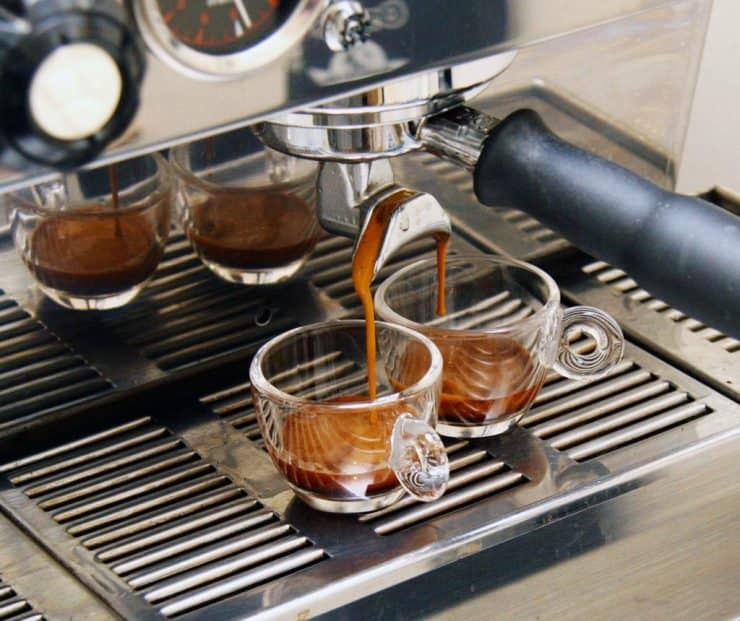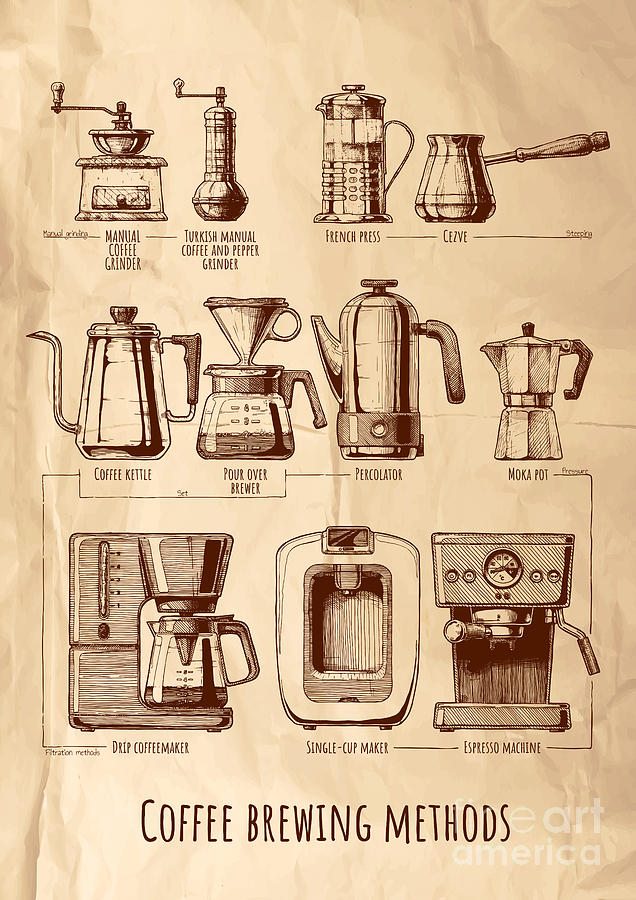A Comprehensive Guide to Various Coffee Brewing Methods You Ought To Try
A Comprehensive Guide to Various Coffee Brewing Methods You Ought To Try
Blog Article
The Science Behind Coffee Developing: Just How Temperature Level and Time Affect Your Drink
Comprehending the scientific research behind coffee developing exposes that temperature level and time are not simple variables however crucial components that determine the drink's taste account and total quality. The optimal brewing temperature level typically drops in between 195 ° F and 205 ° F, while the period of removal differs dramatically across different techniques. This interplay of aspects can cause a mug that is either frustrating or delightful. As we check out the nuances of these aspects, the inquiry develops: exactly how can one efficiently equilibrium temperature and time to accomplish that best brew?
The Chemistry of Coffee Removal
The chemistry of coffee removal looks into the elaborate procedures that change raw coffee beans into the fragrant beverage taken pleasure in worldwide. This makeover primarily involves the solubility of numerous substances present in the beans, which are influenced by factors such as grind dimension, water high quality, and the brewing approach utilized.
During the brewing procedure, warm water functions as a solvent, removing soluble substances, including high levels of caffeine, lipids, sugars, and acids, from the coffee grounds. Each substance adds to the taste account, scent, and body of the final drink. Acids are liable for zesty and bright notes, while oils contribute to a rich mouthfeel.
The initial stages of developing remove acids and sugars, leading to an enjoyable level of acidity, while long term extraction can lead to anger due to over-extraction of unwanted substances. Recognizing these chemical interactions is critical for maximizing developing strategies, as the equilibrium in between removal time and water temperature can substantially influence the general top quality of the coffee.
Ideal Developing Temperatures
Finding the ideal developing temperature is essential for unlocking the complete possibility of coffee tastes and scents - coffee brewing methods. Research study indicates that the optimum variety for brewing coffee exists in between 195 ° F to 205 ° F(90 ° C to 96 ° C) Within this variety, the extraction procedure efficiently dissolves the preferable soluble substances in coffee beans, resulting in a balanced and flavorful mug
Developing at lower temperatures, such as below 195 ° F(90 ° C ), might lead to under-extraction, generating an acidic and weak brew with muted tastes. Alternatively, developing at temperatures exceeding 205 ° F(96 ° C) can result in over-extraction, producing a severe and bitter preference as a result of the extreme dissolution of unfavorable compounds, such as tannins.
Moreover, the perfect developing temperature level can vary depending on the coffee bean kind and roast degree. As an example, lighter roasts usually gain from somewhat higher temperature levels to improve their complex taste profiles, while darker roasts may be much better suited to reduced temperatures to minimize resentment.
Inevitably, keeping precision in developing temperature levels is vital for accomplishing a harmonious balance of tastes, making certain that every cup of coffee provides an enjoyable sensory experience.
Effect of Developing Time
Brewing time plays a pivotal duty in establishing the taste profile and total top quality of coffee. The removal procedure, which affects the preference, fragrance, and body of the drink, is greatly based on the length of time the coffee premises are in call with water. Much shorter brewing times can lead to under-extraction, causing a weak or sour flavor, as not enough soluble compounds are dissolved. Alternatively, long term developing can cause over-extraction, where unfavorable compounds are released, causing an astringent or bitter preference.
Optimum developing time varies depending on the method made use of and the grind dimension of the coffee. A French press generally requires regarding four mins, while espresso removal is normally completed within 25 to 30 secs. It is important to calibrate brewing time in combination with other variables, such as water temperature level and coffee-to-water proportion, to achieve the wanted flavor account.
Comprehending the impact of developing time enables coffee fanatics to fine-tune their developing techniques, inevitably improving the sensory experience of their mug (coffee brewing methods). With cautious attention to this variable, one can unlock the complete potential of the coffee, exposing its unique features and nuances
Developing Methods and Their Results

For instance, approaches like French press and cold brew permit a longer steeping time, leading to a fuller body and durable taste as a result of raised removal of oils and soluble solids. Conversely, espresso brewing utilizes high pressure and a shorter extraction time, producing a concentrated shot that highlights extreme tastes and an abundant crema.
Pour-over strategies, such as Chemex or V60, offer an even more controlled removal procedure, permitting the maker to manipulate flow price and water circulation, which can boost illumination and quality. Percolation approaches cycle water via the coffee grounds multiple times, leading to a stronger, often bitter flavor.
Finally, using paper filters versus steel filters can likewise influence the last taste; paper filters normally produce a cleaner mug by capturing oils and fine particles, while steel filters permit even more oils to travel through, adding to a fuller mouthfeel - coffee brewing methods. Understanding these nuances can raise the coffee experience considerably
Tips for Perfecting Your Mixture
A well-executed mixture can transform also the easiest coffee into an exceptional experience. Grind the beans just prior to brewing to make best use of quality, ensuring the work dimension matches your brewing approach-- coarser for French press and finer for espresso.
Water top quality plays a critical function; usage filtered water without impurities. The excellent brewing temperature level ranges between 195 ° F and 205 ° F(90 ° C to 96 ° C ) Also hot can swelter the coffee, while also awesome might under-extract tastes.
Timing is equally vital. For immersion methods, steeping for 3 to five minutes is ideal, whereas drip approaches usually take about five minutes. Try out mixture times to find your favored toughness.

Verdict
In recap, the elaborate relationship between temperature and time is critical in the coffee brewing process. Adhering to optimal brewing temperatures between 195 ° F and 205 ° F, alongside precise timing tailored to each method, guarantees the desired flavor profile is achieved. Recognizing these clinical concepts equips individuals to fine-tune my site their brewing techniques, ultimately leading to an extra enjoyable and well balanced coffee experience. Mastery of these elements is important for any coffee enthusiast looking for quality in their beverage.
Understanding the science behind coffee developing exposes that temperature and time are not plain variables however pivotal components that determine the beverage's taste profile and overall top quality. Understanding these chemical communications is continue reading this vital for enhancing developing methods, as the balance in between extraction time and water temperature level can substantially influence the general quality of the coffee.Developing time plays a pivotal function in identifying the taste profile and general quality of coffee. By focusing on these components-- bean high quality, grind dimension, water temperature, soaking time, and ratio-- you can raise your coffee developing process, resulting in a constantly exceptional mug.
In recap, the elaborate partnership in between temperature and time is extremely important in the coffee brewing procedure.
Report this page